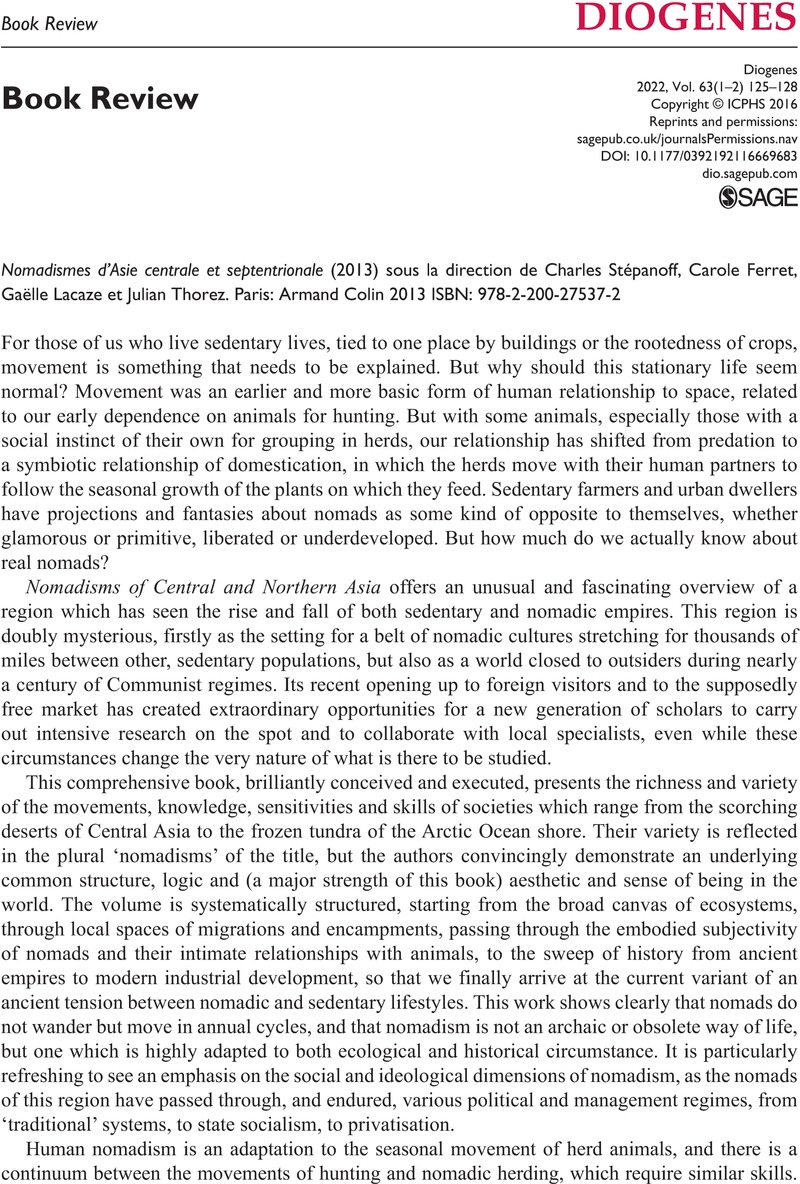No CrossRef data available.
Nomadismes d’Asie centrale et septentrionale (2013) sous la direction de Charles Stépanoff Carole Ferret Gaëlle Lacaze Julian Thorez. Paris: Armand Colin2013 ISBN: 978-2-200-27537-2
Review products
Nomadismes d’Asie centrale et septentrionale (2013) sous la direction de Charles Stépanoff Carole Ferret Gaëlle Lacaze Julian Thorez. Paris: Armand Colin2013 ISBN: 978-2-200-27537-2
Published online by Cambridge University Press: 01 January 2024
Abstract
An abstract is not available for this content so a preview has been provided. Please use the Get access link above for information on how to access this content.

Information
- Type
- Book Review
- Information
- Diogenes , Volume 63 , Issue 1-2: Emotions and Ethical Life: Perspectives from Asia , February 2016 , pp. 125 - 128
- Copyright
- Copyright © ICPHS 2016

